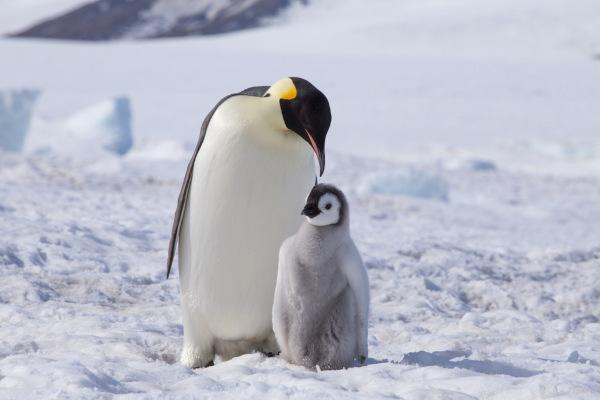penguins they are birds belonging to the order Sphenisciforms, distributed from the Antarctic continent to the Galapagos Islands. Currently, 18 species of penguins are described, all of which are incapable of flying, but excellent swimmers. Those animals present as adaptations to swimming the absence of pneumatic bones, body with a hydrodynamic shape, presence of interdigital membranes in the paws and wings adapted for swimming.
Read more: Adaptations of birds to flight, among the main ones are: presence of hollow bones and feathers
General characteristics of penguins
penguins are birds and, therefore, have typical characteristics of this group of animals, such as the presence of feathers and absence of teeth. most species of penguins has black and white coloring, which helps in camouflage. These animals serve as prey for seals, whales, sea lions and sharks. feed on small fish, crustaceans and molluscs, like squid and octopuses.

They have wings that are highly adapted for swimming and have short legs with interdigital webs. Despite being incapable of flying, the pectoral muscles of these animals are highly developed, as seen in flying birds. It is worth noting that some
species can reach up to 40 km/h while swimming, being therefore highly efficient in this mode of locomotion.the penguins do not have pneumatic bones, ie hollow bones. While pneumatic bones are an important adaptation to bird flight, in these animals their presence could make diving difficult. Another feature related to diving is the presenceof a hydrodynamic fusiform body. Penguins also have a thick layer of fat and evenly distributed feathers by the body, adaptations important for survival in the cold environment.
In the terrestrial environment, penguins are not as agile and fast as in the water, since its short legs make it difficult to move. In addition to standing and walking on dry land, another way to get around in this environment is to slide on the snow on your belly. To ensure greater momentum, these animals use their wings.

reproduction
Penguins, as well as other birds, put eggs. However, unlike most birds, penguins do not nest individually, being observed colonies with hundreds of individuals. Although colony nesting seems like a full plate for predators, the proximity between the nests favors some protection. Protection is greater in more central nests than in those located on the periphery.
Read too: Difference between bird and bird - every bird is a bird, but not every bird is a bird
penguin species
As mentioned, there are 18 penguin species currently described. Below, we will know some of them:

Magellanic Penguin (Spheniscus magellanicus): stands out as the only penguin species found regularly on our coast. They feed on fish, crustaceans and molluscs, varying their diet according to the availability of food in a region. They weigh about 4 kg and measure 71 cm in length.
Emperor penguin (Aptenodytes forsteri): it is the largest of all penguins, measuring about 1.15 m and weighing 40 kg. The female of the species lays only one egg, which is given to the partner for incubation. The females go in search of food and the males keep the egg balanced on their feet and covering it with a fold of skin from the belly. Male penguins do not feed during this period, which lasts two months, and lose about half their weight until the females return. Females return and regurgitate food for their offspring. Males can then feed.
Gentoo penguin (Papuan Pygoscelis): It has a height of about 75 cm and weighs 6 kg. It prefers to stay in ice-free regions and feeds opportunistically, capturing prey such as fish, squid and crustaceans. Its striking feature is a white triangular band located above the eyes. This species is capable of making a very loud sound that resembles that of a trumpet. It stands out as the fastest underwater bird in the world.
By Vanessa Sardinha dos Santos
Biology teacher

